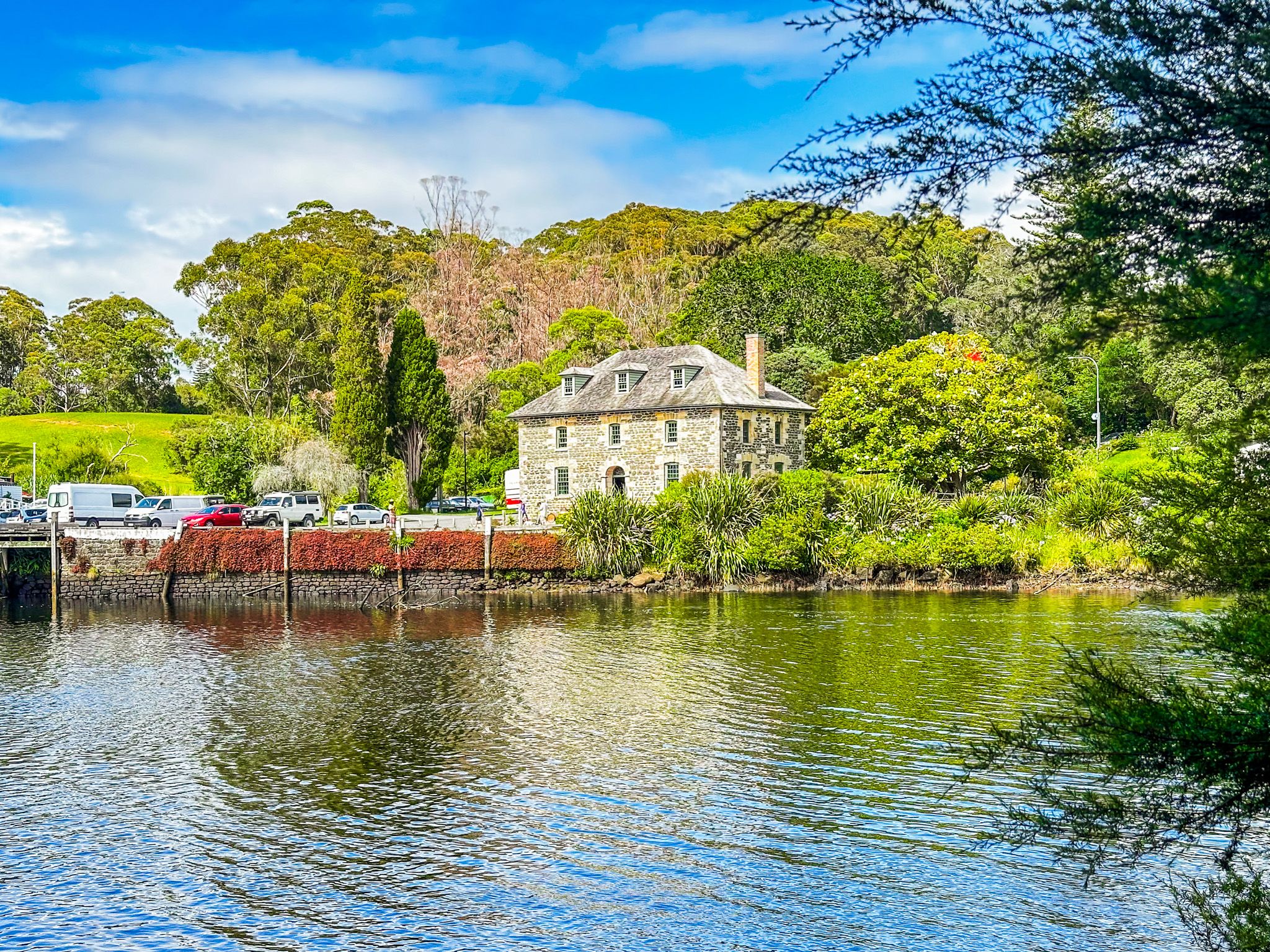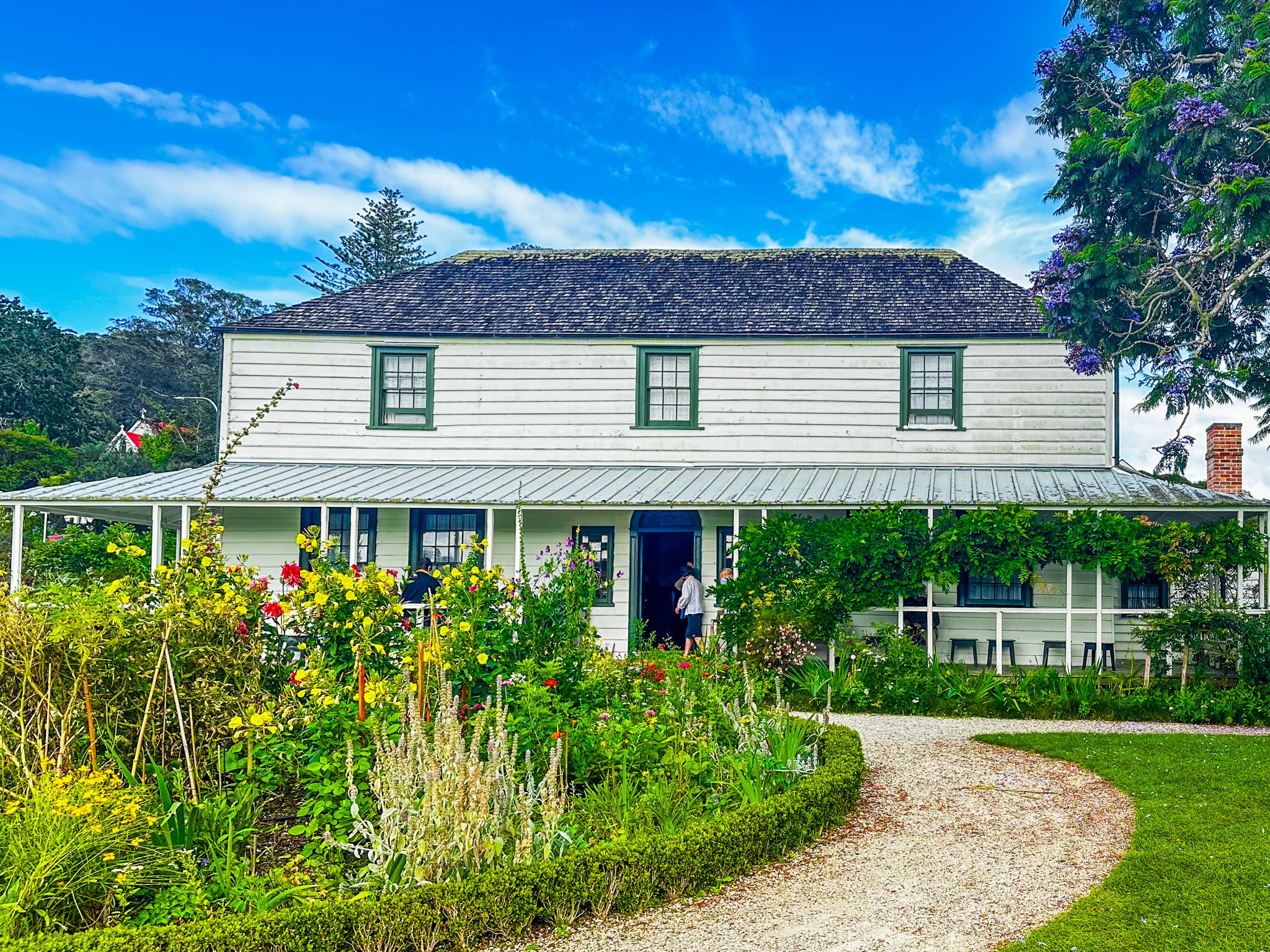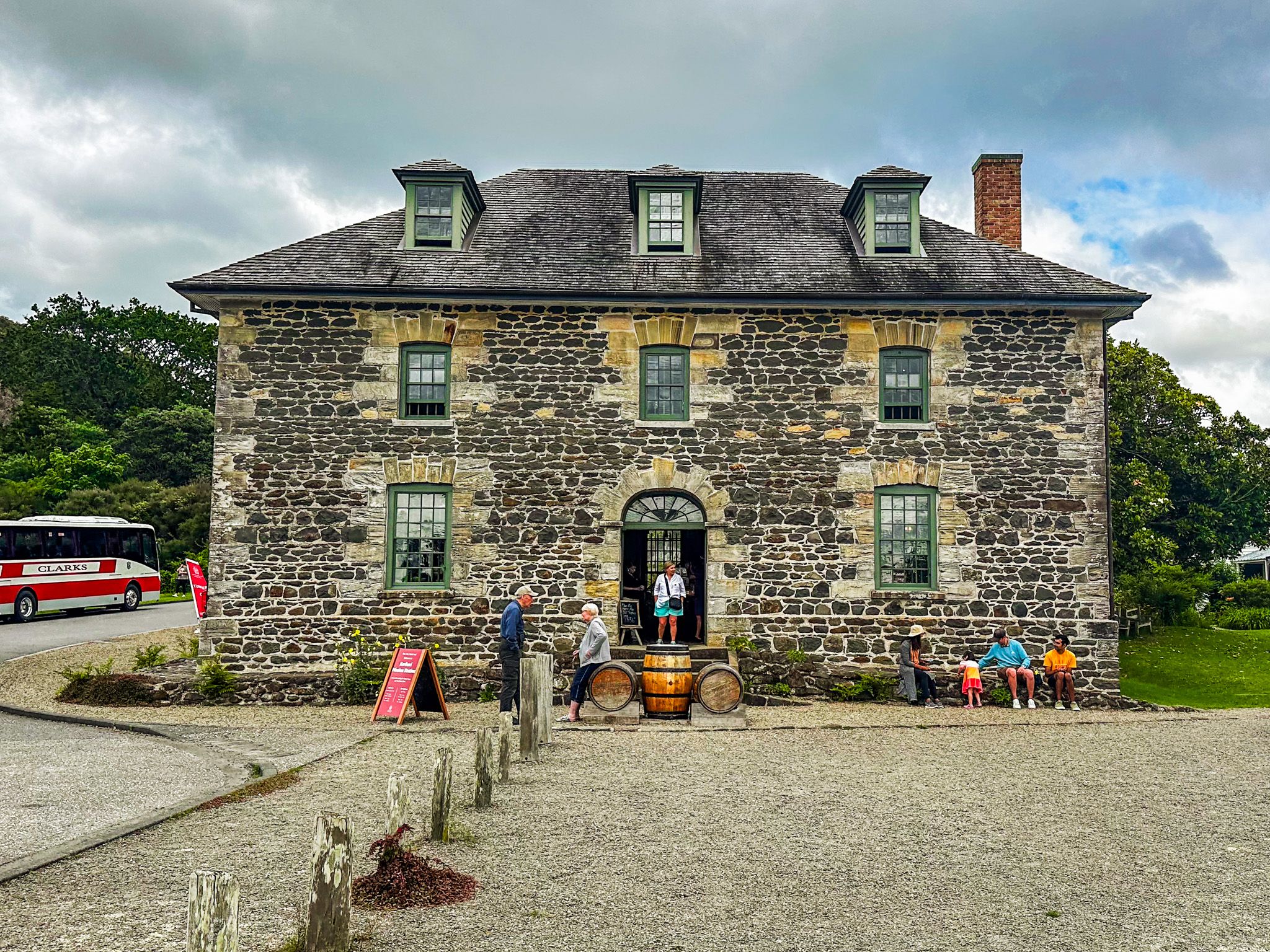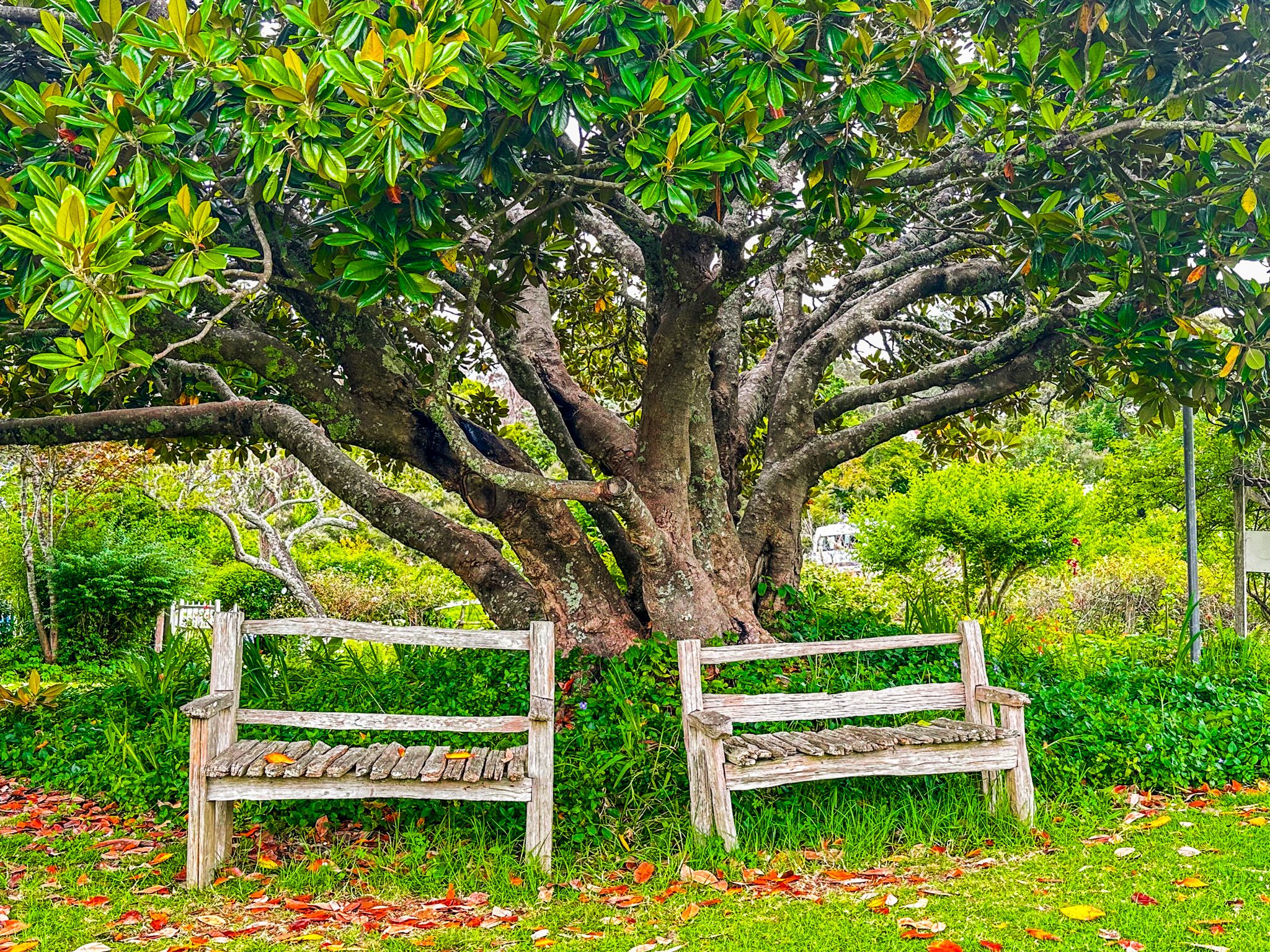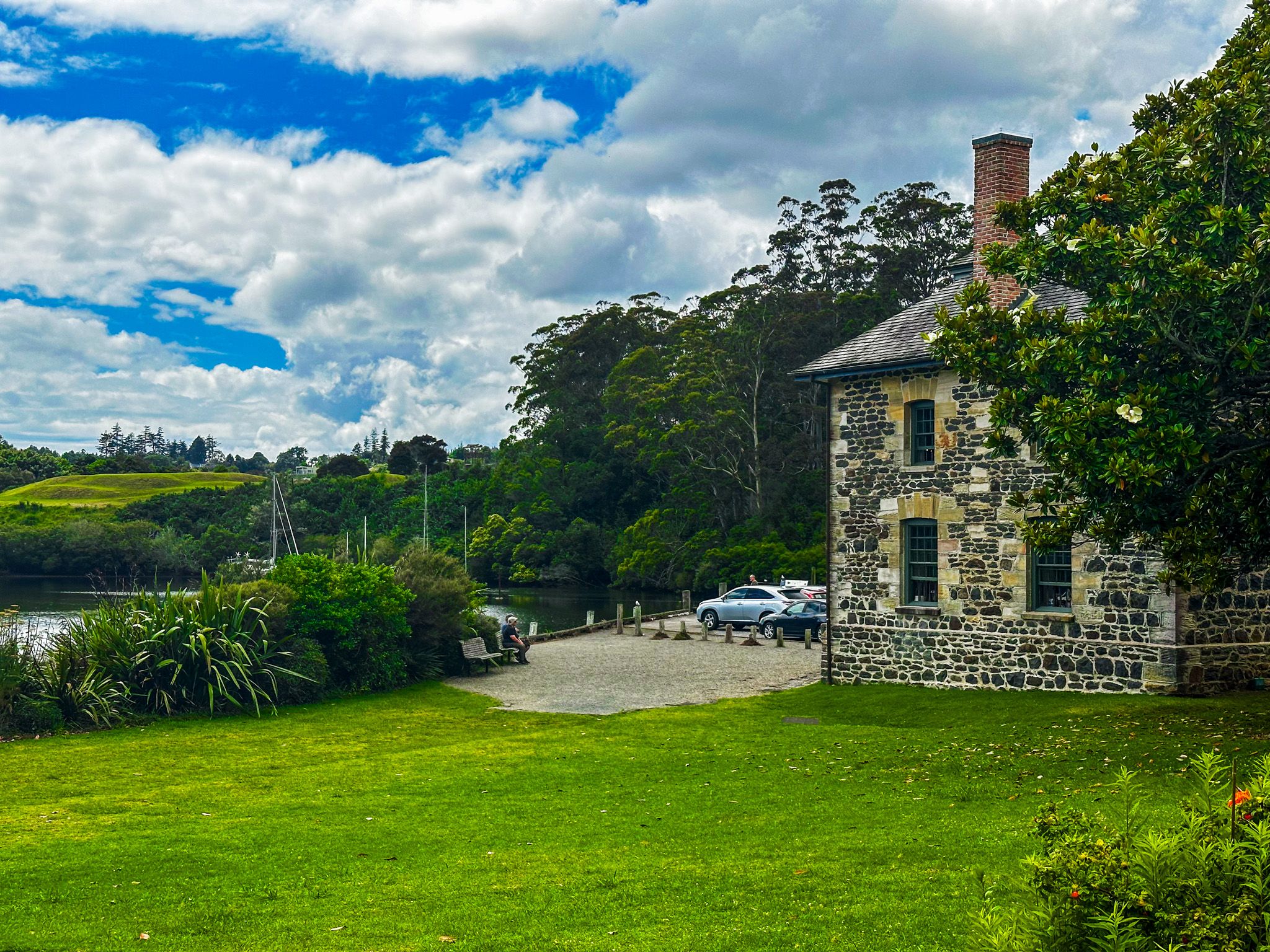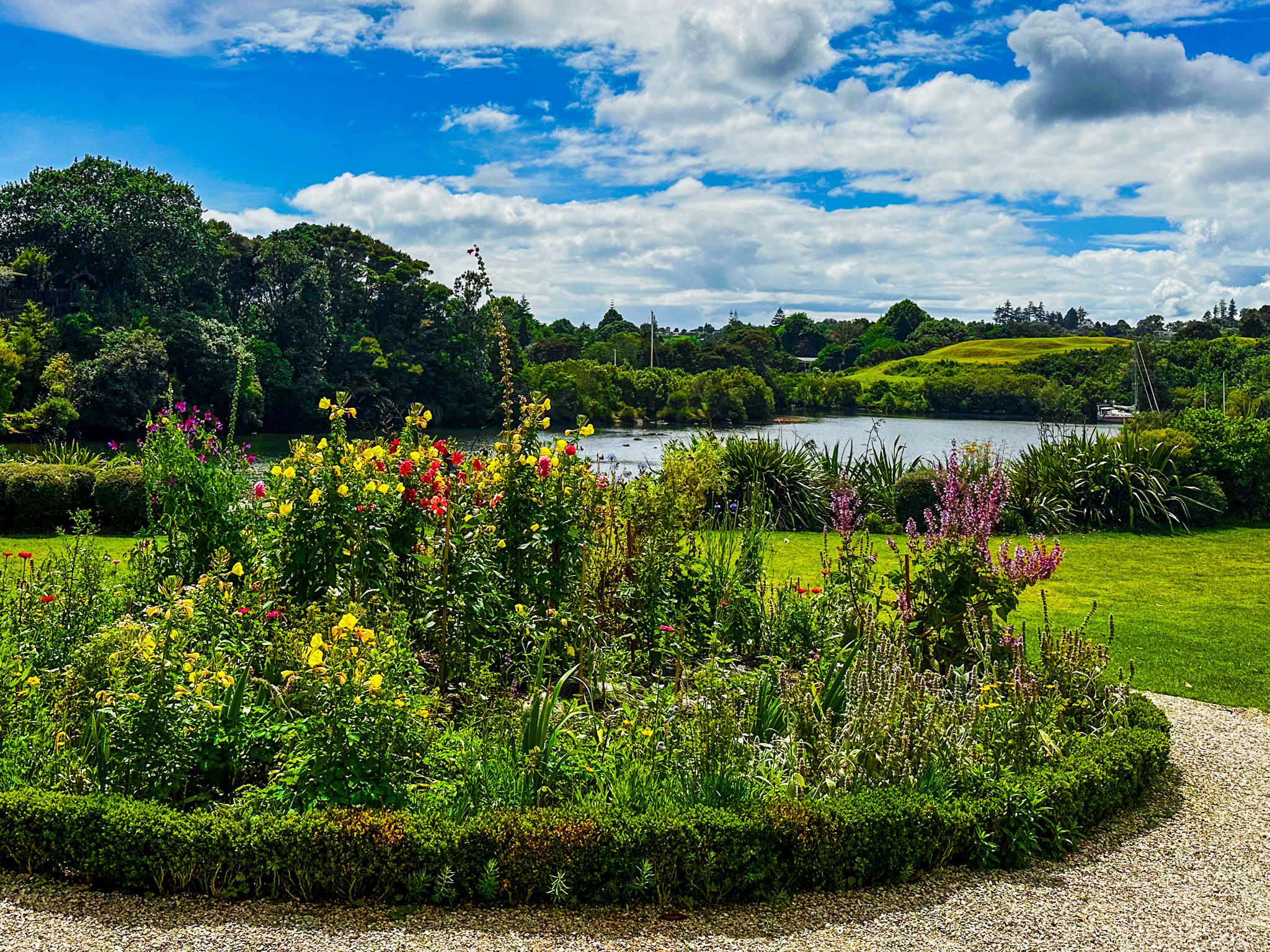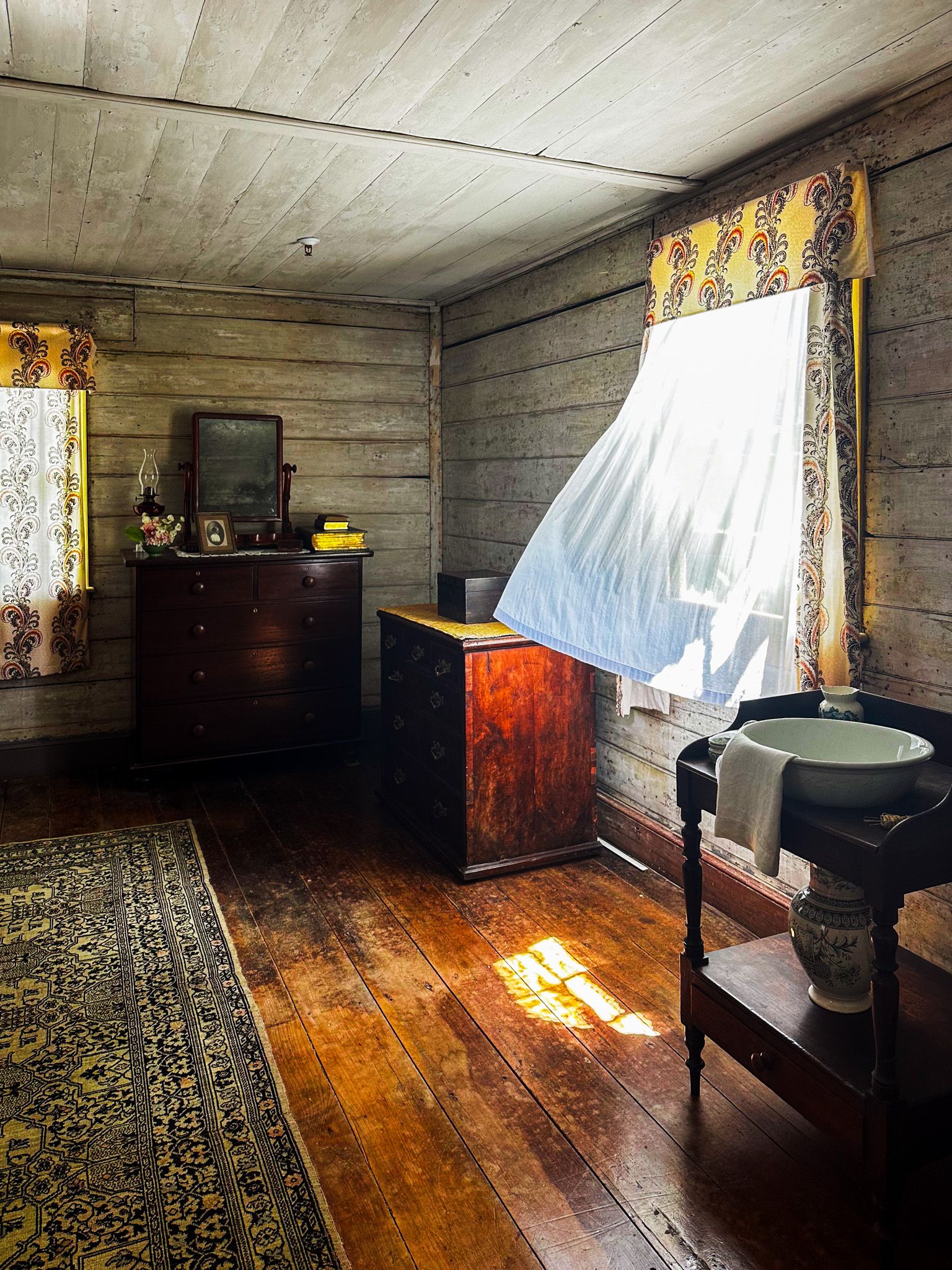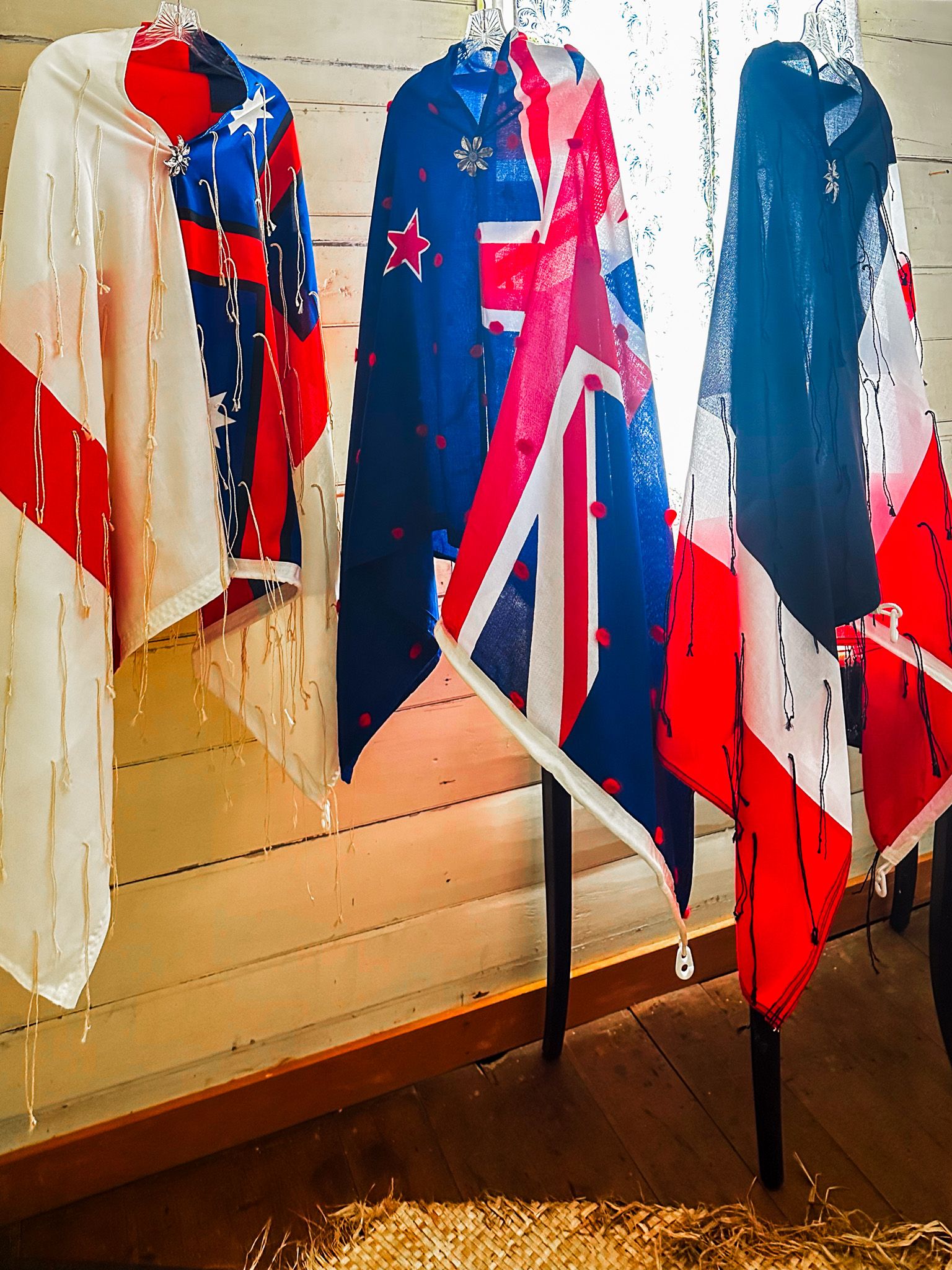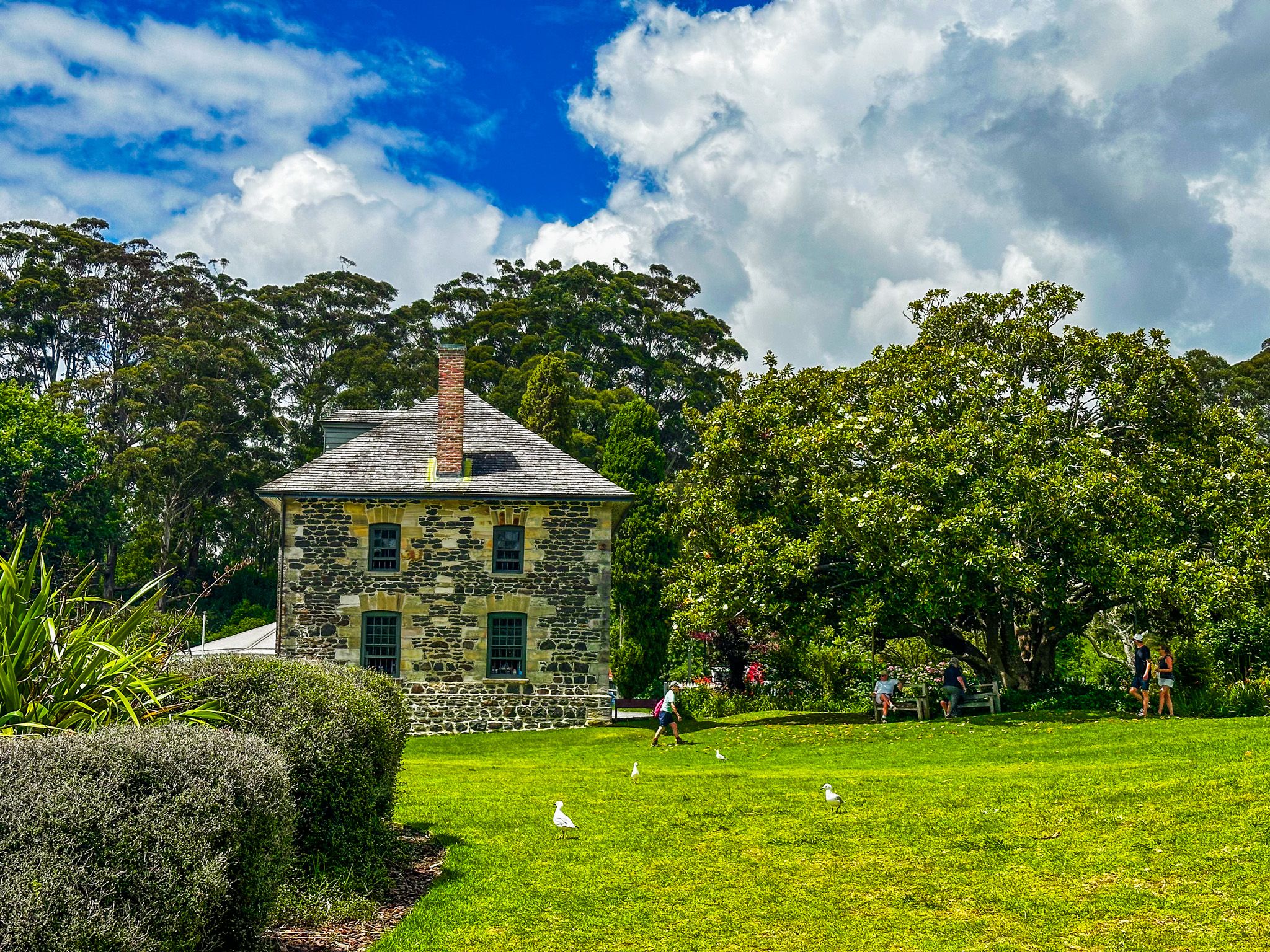Mission House, also known as Kemp House, was built on the edge of the Kerikeri River in the Kerikeri Basin in 1822, and the Stone Store was built about 20 metres to the southeast in 1832-36. The two buildings are the oldest wood and stone buildings in NZ. In front of the Stone Store is a small wharf. Although not easy to pick out with various upgrades, it was also originally built in stone, dating back to the early development of Kerikeri. Immediately behind Kemp House is a cafe.
Mission House was the first of various mission houses built in NZ that pre-dated the Treaty of Waitangi in 1840. Several historic mission houses are scattered around Northland, especially from the Bay of Islands up to Whangaroa Harbour and west to the Hokianga. These houses were built to accommodate the missionaries of various Christian sects keen on bringing education and Christianity to Māori in the early 1800s. Many Māori were also keen and provided land and other support to bring the missionaries to NZ. They improved trade and political access to Europeans and were instrumental in turning Māori into a written language.
Samuel Marsden acquired the land from Hongi Hika of Ngāpuhi to develop a mission station for the Church Missionary Society. The first missionary was Reverend John Butler, who was told to erect the buildings. Kororipo Pā to the southeast provided protection. While Marsden, Thomas Kendall and Hongi Hika took a trip to Britain, Mission House was built, mostly from locally milled kauri, by a mix of Māori and European labour. Mission House was completed by 1822, but arguably more significant was the return of Kendall and Hongi Hika with a thousand muskets. Kororipo was then used as a base for the Ngāpuhi campaigns in the Musket Wars.
Butler was sacked in 1823, and the house was occupied by George Clark until James and Charlotte Kemp took it over in 1832. The Kemps subsequently became owners of the property in 1859. It was in the Kemp family until 1974, when it was given to the NZ by Ernest Kemp, a great-grandson of James and Charlotte Kemp. Heritage NZ now manages the house.
Today, it is a museum, with a modest fee, which records the early history of European and Māori interactions. There is also a pleasant heritage garden, orchard, and a cafe in a separate heritage building immediately behind the house.
A store was part of the Church Missionary Society’s mission in Kerikeri Basin. A wooden one was initially established for trade between Europeans and Māori. There was also a plan to build a flour mill on the river, which was built at Waimate instead. In the early 1830s, it was decided to upgrade the wooden structure to stone. This provided better protection from rats, defence against Māori and reduced fire risk.
However, by the mid-1830s, the store was uncompetitive as other settlers and Māori developed their businesses. The new building was used as the mission library by Bishop Selwyn in the early 1840s, then as a magazine and barracks by Governor Grey during the Flagstaff War of the mid-1840s. After the war, it became a kauri gum trading centre, then a boys' school in the 1860s.
The Kemp family bought the building in 1874, and it became a general store, then a tourist destination. In 1975, the Kemps sold it to Heritage NZ. it still operates as a store with a range of interesting craft products. Upstairs is the Kerikeri Museum, which has a modest entry fee.

